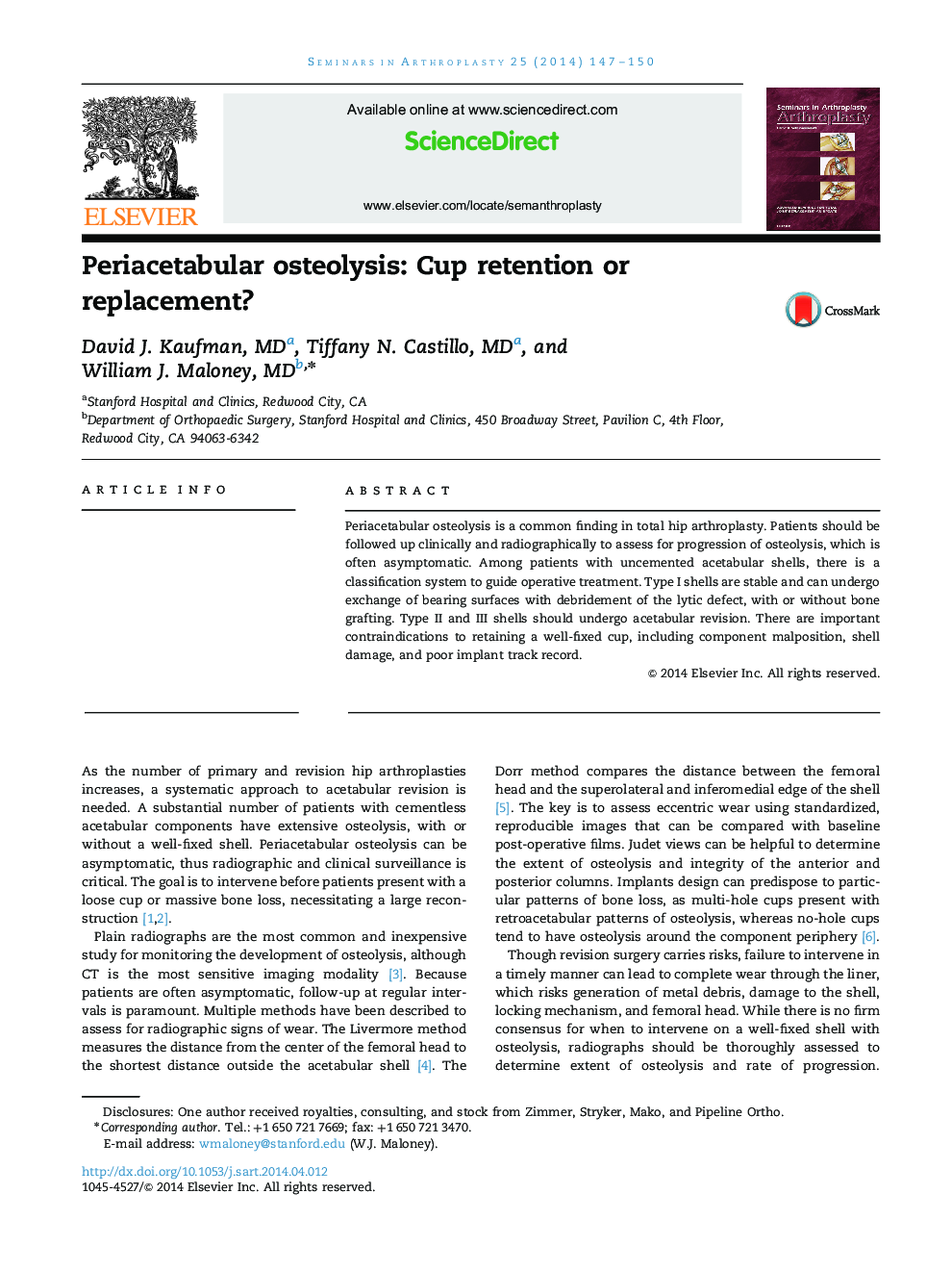| Article ID | Journal | Published Year | Pages | File Type |
|---|---|---|---|---|
| 4093795 | Seminars in Arthroplasty | 2014 | 4 Pages |
Abstract
Periacetabular osteolysis is a common finding in total hip arthroplasty. Patients should be followed up clinically and radiographically to assess for progression of osteolysis, which is often asymptomatic. Among patients with uncemented acetabular shells, there is a classification system to guide operative treatment. Type I shells are stable and can undergo exchange of bearing surfaces with debridement of the lytic defect, with or without bone grafting. Type II and III shells should undergo acetabular revision. There are important contraindications to retaining a well-fixed cup, including component malposition, shell damage, and poor implant track record.
Related Topics
Health Sciences
Medicine and Dentistry
Orthopedics, Sports Medicine and Rehabilitation
Authors
David J. Kaufman, Tiffany N. Castillo, William J. Maloney,
